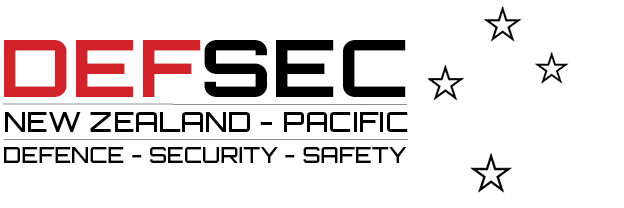
The Privacy Commissioner will be keeping a close eye on Foodstuffs North Island’s facial recognition camera trial, and with good reason, writes Chief Editor Nicholas Dynon. But is that anywhere near enough?
The trial, which commenced on 08 February, was initiated after Privacy Commissioner Michael Webster asked Foodstuffs North Island to provide evidence that facial recognition technology (FRT) is a justified measure for reducing retail crime given its privacy impacts. Foodstuffs North Island will use the data from the 25-store trial to assess whether to roll-out the technology further.
According to a February media release by the Office of the Privacy Commissioner (OPC), “the use of biometric technologies (which FRT is) is something [the Privacy Commissioner] thinks all New Zealanders should care about because it’s a significant step in this technology becoming more commonplace and it has privacy implications.”
Trialling Live Facial Recognition
What the Office of the Privacy Commissioner is referring to as Facial Recognition Technology (FRT) and Foodstuffs North Island as Facial Recognition (FR) is, in fact, Live Facial Recognition (LFR). LRF is a technology that uses analytics to compare a live camera video feed of faces against a predetermined watchlist of people to find a possible match.
In the case of the six-month trial, LFR is being assessed to ascertain its effectiveness in comparing the faces of people entering Foodstuffs North Island stores with a watchlist containing the facial images of Persons of Interest (individuals who have previously engaged in or assisted “harmful behaviour” at a store).
Read this article in the digital edition:
“New Zealanders deserve to shop for their milk and bread without having their faces scanned unless it’s really justified,” said Webster. “We wouldn’t accept being fingerprinted and checked at the door before shopping for groceries – that sounds ludicrous – but FRT is a similar biometric process that is faster, machine-run, happens in a nanosecond, and creates a template to compare your face to, now and in the future.”
“We want people to be safe as they shop and work. But I have real questions about whether the technology will be effective in stopping violent behaviour or preventing harm. It’s also not an FRT-or-nothing situation”, he stated. “There are other options in place to deal with retail crime and therefore Foodstuffs North Island needs to find hard data that it works and is necessary.”
The Commissioner has raised the concern that “FRT isn’t a proven tool in efforts to reduce harmful behaviour in supermarkets, especially violent harmful behaviour.”
According to the OPC, global evaluations of even the most accurate FRT software show that false matches are more likely to happen for people of colour, particularly women of colour.
“I am particularly worried about what this means for Māori, Pasifika, Indian, and Asian shoppers especially as the software is not trained on New Zealand’s population,” said the Commissioner. “I don’t want to see people incorrectly banned from their local supermarket and falsely accused.”
“Protecting privacy is key to ensuring human dignity, safety, and self-determination. It is a key part of what makes us a free and democratic society,” he said. “New technologies have the promise of huge benefits. My job is to ensure that we don’t accidentally give up our privacy rights along the way.”

Watching: New Zealand Privacy Commissioner Michael Webster. Image: Office of the Privacy Commissioner / LinkedIn.
UK Parliament questions legality of LFR
Our Privacy Commissioner has good reason to be concerned. A recent United Kingdom Parliament Justice and Home Affairs Committee investigation into the deployment by police forces of Live Facial Recognition (LFR) Technology has identified several issues.
In a 27 January letter to UK Home Secretary James Cleverly, the Committee’s Chair Baroness Hamwee Committee wrote that the deployment of the technology lacks neither legal foundation, nor rigorous standards or systems of regulation, nor consistency in approaches to training in its use by police forces.
The Committee accepted that LFR may be a useful tool for police forces in apprehending criminals, but stated it is deeply concerned that its use is being expanded without proper scrutiny and accountability.
“To us it seems the fact that the technology is regarded as controversial means that continued public support cannot be taken for granted.”
In order to ensure public trust in the police’s operation of LFR and its support of the use of the technology, the Committee called for:
- A clear foundation in law for the use of LFR technology
- A legislative framework for the regulation of the deployment of LFR technology
- Clear structures and regulation in relation to the use of LFR as well as independent scrutiny
- Future-proofing of regulations to meet for rapid advancement in technology
- Consistency in training and in the use of LFR across England and Wales.
According to the Committee, the police should make it very apparent to the public when and where LFR technology is being deployed, and pre-deployment communication must be standardised through an enforceable national procedure.
“It is essential that the public trusts LFR and how it is used,” said Baroness Hamwee. “It is fundamental that the legal basis is clear. Current regulation is not sufficient. Oversight is inadequate.”
“Technology is developing so fast that regulation must be future-proofed,” she continued, noting that police may soon be able to link LFR cameras to trawl large populations, such as Greater London, and not just specific localities.
Notably, the Baroness also stressed that it was the position of the Committee that the Government must lead a wider public debate about the use of LFR technology, both as it is currently being used and as it develops. “To us it seems the fact that the technology is regarded as controversial means that continued public support cannot be taken for granted.”
“We are an outlier as a democratic state in the speed at which we are applying this technology,” she continued. “We question why there is such disparity between the approach in England and Wales and other democratic states in the regulation of LFR.”

Concerns: Baroness Hamwee, Chair of the UK Parliament Justice and Home Affairs Committee. Image: Roger Harris (CC.30).
In a report published in March 2022 titled Technology rules? The advent of new technologies in the justice system, the Committee characterised the UK as “a new Wild West, in which new technologies are developing at a pace that public awareness, government and legislation have not kept up with.”
In Aotearoa, the New Zealand Police possesses several facial recognition capabilities, which are listed on its Technology capabilities list, but has stated that it does not use LFR technology. The decision not to use LFR came in response to the recommendations of a November 2021 independent report into considerations for use of facial recognition.
“Police will not deploy any Live FRT and will engage in wider public consultation before any possible change to this position is made,” stated the Response Plan stemming from the report’s recommendations. “Police will continue to monitor technology developments in this space, to help inform any decisions on future use.”
Public Acceptability: A sliding scale
That the UK Parliament’s Justice and Home Affairs Committee is raising fundamental concerns over the deployment of LFR by police should be a red flag that New Zealand’s legislators should be taking notice of.
International research into the public acceptability of facial recognition technologies, including a 2019 Ada Lovelace Institute study and a 2021 study published in the journal Public Understanding of Science, among others, find a clear distinction between the acceptability of police use of FRT and private company use of FRT.
In short, despite all the concerns raised about police operation of FRT, the public are significantly more trusting of police than it is of private companies (including retailers) operating FRT. The 2021 study, for example, found that 42% of UK respondents were accepting of government use of FRT, yet only 20% were accepting of its use by private companies.
Importantly, police use comes with a perceived public benefit, such as the disrupting of terrorists or the tracking down of a murderer. “In cases without a clear public benefit,” states the Ada Lovelace Institute study, “people are less likely to feel comfortable with the use of facial recognition technology.”
The research also tells us that acceptability of FRT depends significantly on the type of deployment. The use of live facial recognition, for example, is significantly less acceptable than the use of non-live facial recognition (such as when it is used in post-incident investigation).
A 2023 study published in The Columbia Science & Technology Law Review found that people are most comfortable with the use of FRT by police for the investigation of serious crimes yet are resistant to it being used as a tool for minor offences.

Research: The public tends to find private company use of facial recognition unacceptable.
New Zealand’s retailers also watching
Foodstuffs North Island’s LFR trial will be closely watched by retailers across Aotearoa New Zealand, according to retailers’ association Retail NZ.
“Retail NZ members are facing increasing rates of crime, putting both their employees and the public at risk, as well as threatening the financial sustainability of retail businesses,” Retail NZ Chief Executive Carolyn Young said. “The outcomes of this innovative trial will be of enormous interest to retailers across the motu.”
According to a Retail NZ Position Statement, retail crime is a significant issue in New Zealand, impacting more than 92% of retailers. In October 2023, Retail NZ released a Retail Crime Report that found the cost of retail crime to its members was well over $2.6 billion.
More and more, retailers are dealing with threatening, violent or simply unpleasant customers, who are trying to steal or damage their property, said Ms Young. Organised crime groups stealing to order, drug addicts and youths looking for notoriety on social media are driving the spike in retail crime, she continued.
Retail NZ confirmed that it supports the introduction of new technologies to combat retail crime and that it is pleased Foodstuffs North Island is taking a lead.
Retail NZ also called on government to adequately resource police to deal with retail crime, and to unclog the court system so that offenders are dealt with promptly.
“Ultimately, retail crime results in higher costs and more security barriers for all customers and consumers. We look forward to learning from this trial to see if the technology is suitable to be rolled out across other retailers,” Ms Young said.
Facial Recognition trial or business case?
While the eventual results of the trial may provide Foodstuffs North Island with an internal business case either for or against its wider adoption of the technology, it will not provide a meaningful gauge of public acceptance of the use of LFR… that’s beyond its scope.
That there has been a degree of transparency by Foodstuffs North Island around the trial is a good thing. That the Privacy Commissioner is keeping a close eye on the trial is a good thing. But even then there is every possibility that this trial leads to an outcome that has not benefitted from wider political and public debate on the question of whether LFR is an acceptable form of surveillance in New Zealand – and, if it is, by whom, in what circumstances, to what extent, and in accordance with which specific safeguards and regulations.
These are bigger questions and, frankly, they are more important questions than those the specific parameters of the Foodstuffs North Island trial seek to cover.
That retailers across the country are also keeping a close eye on the trial is understandable, but it also gives one pause to consider LFR’s potentially dystopian implications.
There are 25 North Island supermarkets involved in the current trial. If you ordinarily shop at one of these but do not wish for your facial image to be captured by the store’s LFR analytics and compared against images in its watchlist, you can opt to shop somewhere else. But ultimately, what if all supermarkets, all shopping malls, were to use LFR? Where would you shop? How would you shop?
It’s a version of the future in which ubiquitous retail LFR surveillance may well have a chilling effect on the contemporary public squares of our cities and suburbs – the retail spaces we shop in, recreate in, meet up for coffee in, wander around in blissful anonymity within.
And for what? Supermarket LFR does not treat the drivers of crime, and it is thus incapable of preventing crime. It can merely displace it, taking it somewhere else… the supply chain, distribution centres, vans delivering online orders, other retailers, the streets, or the dairies for whom LFR isn’t a viable solution.
There seems little public benefit in that.










1 Trackback / Pingback
Comments are closed.